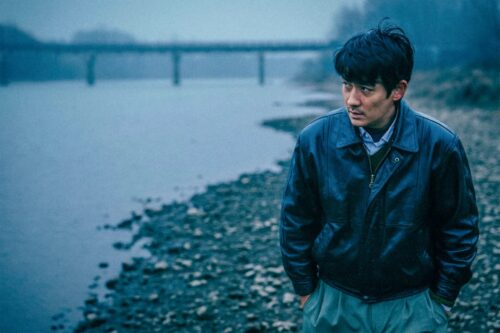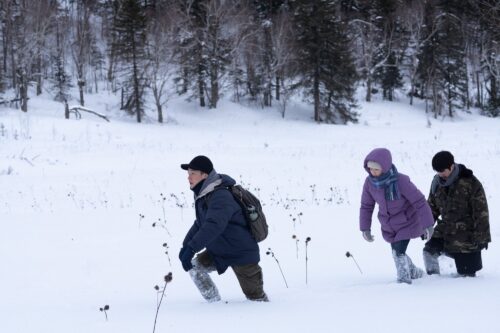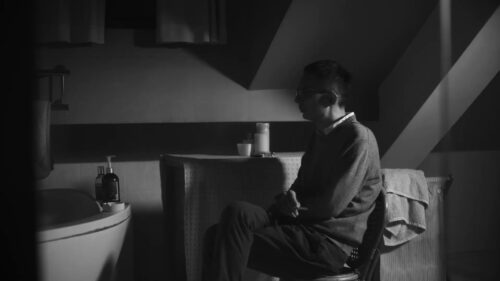Diversifying Tibetan cinema: Q&A with Jigme Trinley, director of ‘One and Four’
Jigme Trinley is an up-and-coming director and the son of the pioneering auteur of Tibetan cinema, Pema Tseden. We discussed what makes Tibetan films Tibetan, the creative process of making his award-winning feature debut, and his experience of “attending” international film festivals in the time of COVID.
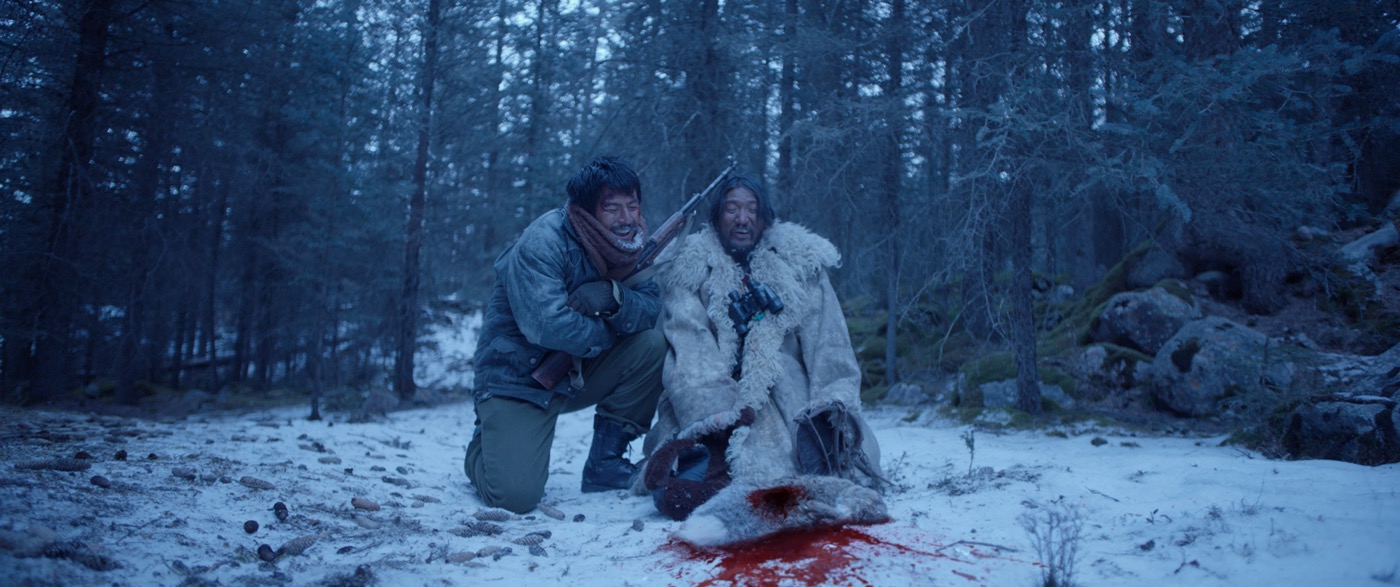
Jigme Trinley (久美成列 Jiǔměi Chéngliè), a 25-year-old Beijing Film Academy graduate, first appeared on the radar of Sinophone cinema when his feature debut One and Four (一个和四个 Yīgè hé sìgè) premiered at the Tokyo International Film Festival last November.
This stylish thriller defies what audiences have come to associate with Tibetan films. There are no mystical rites, no spiritual contemplation, no existential reflection — at least not explicitly. Instead, Trinley treats viewers to guns, poachers, police, and a car chase, all set on a snowy mountain and in a wooden cabin where a forest ranger is visited by strangers one after another.
One and Four was selected to the Fantasia International Film Festival in Canada and the New York Asian Film Festival, where it was awarded a Special Mention for Technical Achievement, before finally having its China premiere during the summer at the FIRST International Film Festival in the northwestern city of Xining — Trinley’s hometown.
The China Project had a chance to chat with Trinley during FIRST in August, just a few days before he and his film would go on to win the Best Narrative Feature and Best Director awards at the festival.
When we met for a chat in the busy lobby of the Sofitel Hotel, where a film financing forum was being held, Trinley seemed less reserved and more articulate than during the Q&A session two days prior alongside two other directors. The atmosphere in the lobby was rather hectic, but he was calm and patient, taking his time to reflect before answering my questions.
Here’s our conversation, edited for brevity and clarity.
The China Project: How did you first start working on One and Four?
Jigme Trinley: Originally, I wanted it to be my graduation project. When I was attending the Beijing Film Academy, I was mostly shooting genre shorts. So, for my graduation I wanted to make a genre feature film. After searching for a while, I came across this very interesting short story [“One and Four,” by Chiangyong Tsering (江洋才让 Jiāngyáng Cáiràng)]. Its structure is actually quite similar to what’s shown in the film, so you can feel that its pace is constantly changing. There are also many genre elements in it: police, bandits, poachers, suspense, and so on. When I read the short story, I thought, “Wow, this is cool. It could be made into a genre film.” Another thing that attracted me a lot in this story is its detailed psychological description. The forest ranger’s suspicion, judgment, and uncertainty are all written in a particularly delicate way that moved me greatly. So, I thought this could be made into a genre film with an auteurist expression.
The character of the forest ranger, Sanggye, felt very interesting to me. I particularly liked how you transported that textual description of him into the film in audiovisual terms.
JT: That was the idea. For example, at the start of the film, Sanggye wakes up hungover in the small wooden cabin. We used fish-eyed shots and dissonant music to show how he must feel in that moment. [Jinpa 金巴, who played Sanggye, also won one of the two Best Performance awards at FIRST.]
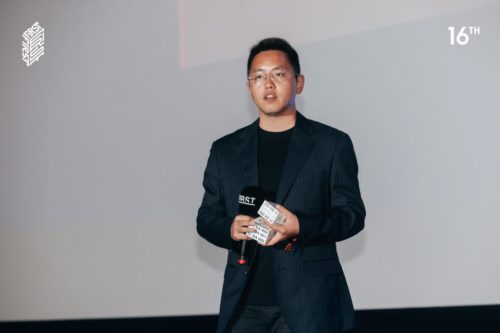
I watched your film without reading anything about it beforehand. I only knew that the director is a Tibetan and Pema Tseden’s (万玛才旦 Wànmǎ Cáidàn) son. While I was watching the film, I found that it was nothing like what I expected, nothing like other Tibetan films. Would you say that your film is a “Tibetan” film? And what do you think about such labels?
JT: It can be seen from different angles, not just the content or story of the film. I believe a “Tibetan film” is one that is made by Tibetans. There are Tibetan people working in our crew at every level. If a “Tibetan film” is made by us Tibetans, it certainly would have a very authentic quality. Take, for example, the wooden cabin, its furnishings, other props, and the costumes. If you let someone from a different ethnicity design these things, it would be symbolic, incompatible, and distant from actual reality. But we went from door to door to find antiques and props and brought them to the set. The clothes were also brought from herders’ houses so that they can match the reality of our lives.
As for the story, I’ve set it in a place far away from our actual living environment, so it has little to do with the social environment in which we Tibetans may be living and the difficulties we may face in reality. I’m looking more abstractly at modes of interpersonal relationships, the basis of people’s trust and selfishness when communicating with each other. This is considered from the dimension of human nature.
Some people may not agree that it is a Tibetan film in terms of content. But I also don’t agree with comments about how this story could take place in any other place, like in northeastern China or something. Perhaps they are looking at this from a larger, more general perspective, such as the story structure or the social environment. But what I want to say is, if you replace Sanggye with, let’s say, a Mongolian or a Han, the way he communicates with other people and their relationship would be completely different.
What were the most difficult challenges when shooting One and Four? How did you overcome them?
JT: The biggest difficulty was, of course, the pandemic. Our crew couldn’t come back to the set after returning home to celebrate the Lunar New Year. The film market was in bad shape; we had a lack of funding, and quite a big one at that. I’ve actually gained a lot of experience and learned a lot this year because I followed my producer to many places and we tried all kinds of ways to find funding. We went to three or four film financing meetings like this one in China. Sometimes you get nothing out of these, but you keep adjusting the editing and the script and then you try again. iQiyi [a Chinese streaming service akin to Netflix] was of great help to us. They bought the film after watching the rough cut, and so we got the money to do more shooting.
So yeah, the pandemic was the biggest problem. As for problems on set, there were too many! [Laughs] Perhaps the most troublesome things for me were the weather and the light in the forest because they are too uncertain. For example, when it’s overcast, everyone goes out, sets the equipment in place, gets ready to start the shoot, and then the sun comes out, leaving you no choice but to wait. You shoot maybe one or two scenes a day, which greatly delays the progress.
I found that the lighting in scenes filmed indoors — that is, most of the film — was also very well done. How was it like to work with your director of photography, Lǚ Sōngyě吕松野, who has previously collaborated with your father Pema Tseden?
JT: During the creative process, I’d often have discussions with the crew, and the person who surprised and pressured me the most was Lǚ Sōngyě. He’d always question me, “Do you think this is okay? I don’t think this is good. Maybe you should think again,” and so on. He’d put forward some ideas from the perspective of cinematography, such as how to frame the characters and what kind of shots would look more interesting, while I look more from the perspective of the story, the drama. So, our perspectives would often differ, but sometimes his ideas would indeed give the scenes more visual clarity. For me, that is a process of learning and gaining experience.
From first reading the original story to post-production, how long did the whole process take?
JT: The pre-production was about six months or so; I wrote the script over quite a long time, and the shooting took 53 days. Everything combined, it took one year and seven months.
One and Four premiered at the Tokyo International Film Festival last year. This year it was screened at the New York Asian Film Festival and the Fantasia International Film Festival in Canada. How was the experience of going to these film festivals, or the experience of your film going to them?
JT: No experience. [Laughs] I simply couldn’t go [because of COVID-related travel difficulties]. But I do read reviews after each screening. Audiences in different regions seem to have different preferences. I found that Japanese filmgoers liked the film very much. I don’t know what exactly impressed them; maybe they just thought it was cool. Some audiences in New York and here in China thought it was just okay or mediocre. I understand where they are coming from and what they don’t like; I myself don’t like some aspects of the film. Sometimes I see some bad reviews and feel quite uncomfortable or unhappy and tell myself not to open the links. But then before I go to sleep at night, I just go, “Screw it. I have to read it.” [Laughs]
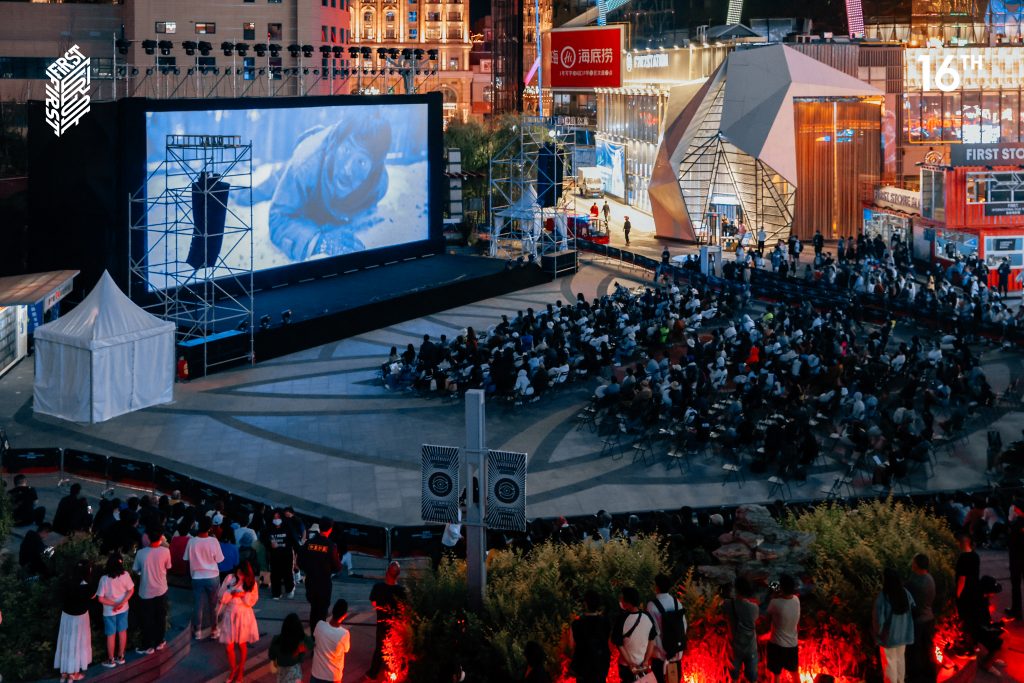
Having participated in these festivals, what do you think is their difference from FIRST, where the film finally had its China premiere?
JT: I can’t really tell, since I didn’t attend the previous festivals in person. But I know that their approach to film selection is different. I think the films that FIRST selects are all quite bold. It’s hard to see the things these films express anywhere else on the domestic film market. Some of them have left quite a deep impression on me, such as Go Fishing (钓鱼 diàoyú), Farewell, My Hometown (再见,乐园 zàijiàn lèyuán), and Every Dog Has His Day (时来运未转 shí lái yùn wèi zhuǎn). I believe that these films, including One and Four, can make the audiences of FIRST see that there are many creative possibilities and offer them inspiration.
Can you tell us what projects you are working on next?
JT: I can’t tell much, but I’m writing another adapted screenplay. It’s set in an inland city and has nothing to do with Tibetans or Tibetan culture. It’s quite an interesting story that has a very rebellious spirit, a kind of revolt against popular trends. For example, you see some post on Weibo and all the comments underneath are exactly the same and very few people try to respond rationally or just simply from another point of view. So, the protagonists in this story see and feel this phenomenon and they counteract. At first, they are hated by others, but then somehow they start to be seen as cool idols or icons by these very same people. And that’s about it.
Thank you very much. Do you have anything you would like to say to all potential audiences of One and Four?
JT: I guess all I want to say is that if you get the chance, be sure to go to the cinema to watch One and Four. In order to give the audience a strong sense of immersion, we really put a lot of effort into the sound and the cinematography, so make sure you enjoy it on the big screen.
One and Four will screen at the 42nd Hawai’i International Film Festival on November 8 and 12, and at the 31st St. Louis International Film Festival on November 12.


